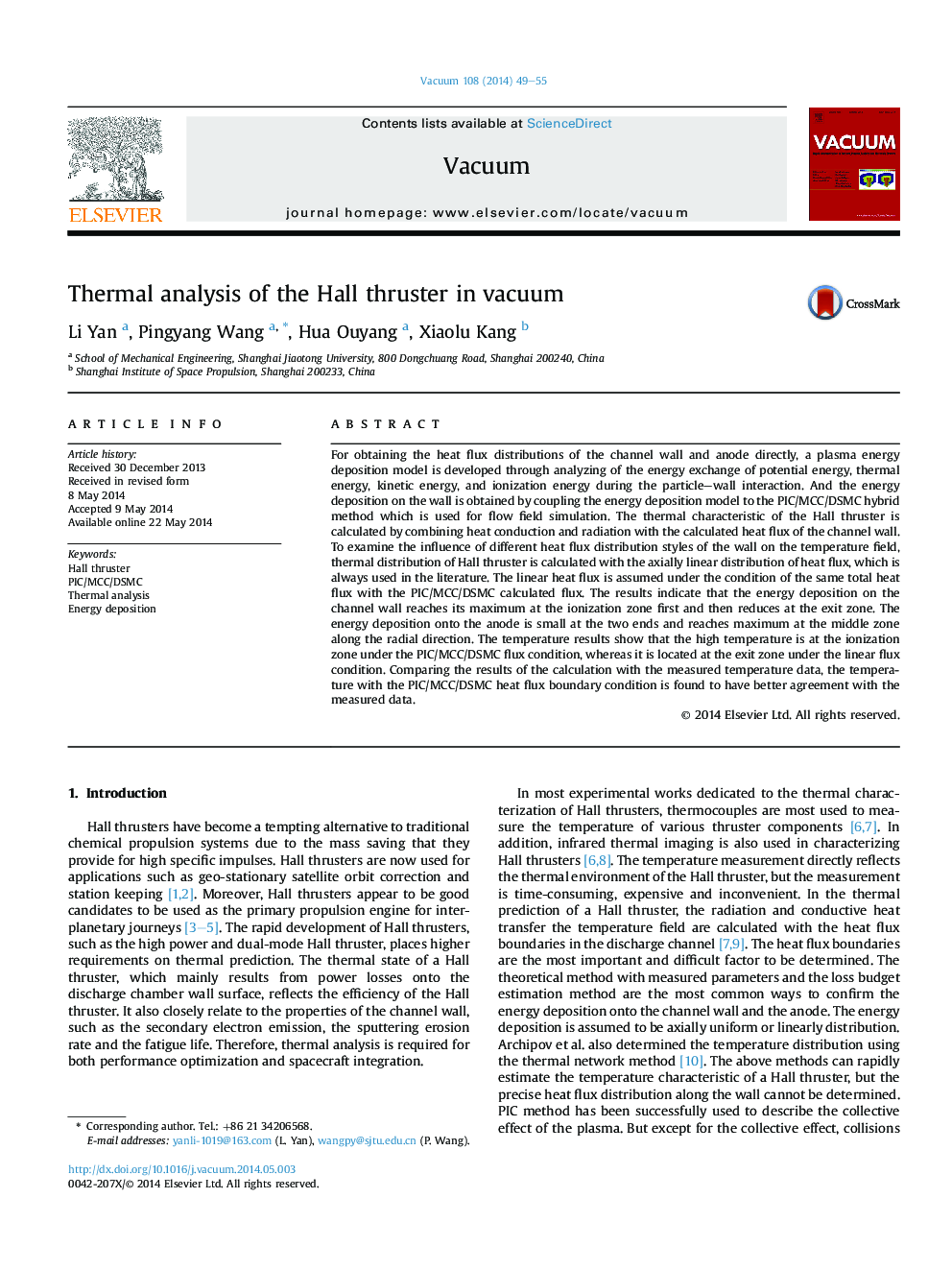| کد مقاله | کد نشریه | سال انتشار | مقاله انگلیسی | نسخه تمام متن |
|---|---|---|---|---|
| 1689867 | 1518961 | 2014 | 7 صفحه PDF | دانلود رایگان |
• A plasma energy deposition model was developed for Hall thruster.
• The energy deposition on the wall is obtained by coupling the energy deposition to the PIC/MCC/DSMC hybrid method.
• The nonlinear distribution of heat flux on the channel wall is got through calculation.
• The temperature under the PIC heat flux was more accurate than the temperature under the linear distribution of heat flux.
For obtaining the heat flux distributions of the channel wall and anode directly, a plasma energy deposition model is developed through analyzing of the energy exchange of potential energy, thermal energy, kinetic energy, and ionization energy during the particle–wall interaction. And the energy deposition on the wall is obtained by coupling the energy deposition model to the PIC/MCC/DSMC hybrid method which is used for flow field simulation. The thermal characteristic of the Hall thruster is calculated by combining heat conduction and radiation with the calculated heat flux of the channel wall. To examine the influence of different heat flux distribution styles of the wall on the temperature field, thermal distribution of Hall thruster is calculated with the axially linear distribution of heat flux, which is always used in the literature. The linear heat flux is assumed under the condition of the same total heat flux with the PIC/MCC/DSMC calculated flux. The results indicate that the energy deposition on the channel wall reaches its maximum at the ionization zone first and then reduces at the exit zone. The energy deposition onto the anode is small at the two ends and reaches maximum at the middle zone along the radial direction. The temperature results show that the high temperature is at the ionization zone under the PIC/MCC/DSMC flux condition, whereas it is located at the exit zone under the linear flux condition. Comparing the results of the calculation with the measured temperature data, the temperature with the PIC/MCC/DSMC heat flux boundary condition is found to have better agreement with the measured data.
Journal: Vacuum - Volume 108, October 2014, Pages 49–55
